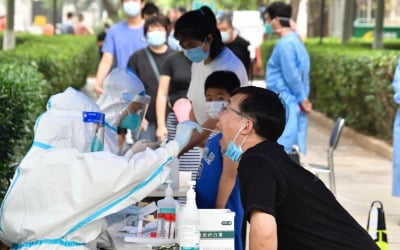[Global View] 스포츠 경기장은 밑 빠진 독?
-
기사 스크랩
-
공유
-
댓글
-
클린뷰
-
프린트
데이비드 뱀퍼드 < 영국 허더즈필드대 교수·맨체스터대 비즈니스스쿨 명예교수 >
![[Global View] 스포츠 경기장은 밑 빠진 독?](https://img.hankyung.com/photo/201705/AA.13954052.1.jpg)
예를 들어 한 축구클럽이 한 시즌에 치르는 경기는 평균 23게임 정도다. 해당 경기장을 축구팀과 럭비팀이 같이 쓴다고 가정해도 연간 경기 일수는 46일에 불과하다. 이는 한 해 300일 이상 관중석이 텅 비어 있다는 뜻이다.
다양해지는 경기장 비즈니스
그러니 경영의 관점에서 볼 때 일부 경기장은 ‘생존 불가’ 판정을 받을 수밖에 없다. 반면 재정적으로 그렇게 허덕이지 않는 경기장도 있다. 이런 경기장은 외부에서 적지 않은 돈을 지원받거나, ‘스포츠’ 경기장이라는 고정관념에서 벗어나 경기장의 활용도를 크게 높임으로써 성공할 수 있었다.
경기장을 다양하게 활용하려는 시도는 언제나 존재했다. 예컨대 1984년 건립된 서울올림픽주경기장(잠실경기장)은 레이디 가가, 폴 매카트니, 콜드플레이 등의 공연장으로 활용되고 있다. 또 프로축구단 광주FC의 홈구장인 광주월드컵경기장에서는 2006년 아시아 음악페스티벌이 열렸고, 2015년엔 하계 유니버시아드 주경기장으로도 쓰였다.
최근에는 경기장 비즈니스가 좀 더 다양한 방법으로 확대되고 있다. 영국 코번트리에 있는 와스프스 럭비클럽은 2015년 지속 가능한 비즈니스 모델을 위해 3500만파운드(약 500억원)어치 채권을 발행했다. 2022년 만기까지 연 6.5% 금리를 두 차례에 나눠 투자자에게 지급하는 방식이다. 그들은 필요한 자금을 외부에서 조달하고 여러 이해관계자를 연결할 방법을 찾았다. 이런 활동을 통해 클럽은 현금을 확보하고 안정적인 재정 자립을 도모할 수 있게 됐다.
다른 클럽도 이런 방법을 따라 할 수 있을 것인가? 리스크가 있다는 점은 확실하다. 그렇지만 재정적으로 일단 여유를 찾음으로써 자신감이 상승하면 클럽의 핵심 자산인 경기장을 최대한 활용하기 위해 좀 더 과감한 방법을 쓸 수 있게 된다. 또 기업 대상 사업이 늘고 네트워킹이 확장되면 경기장 비즈니스 전체에도 긍정적인 영향을 준다. 예를 들어 코번트리는 스컨소프 유나이티드 축구클럽에 1980년대 지어진 9000석 규모 현 경기장을 대체할 1만2000석 경기장 신축을 승인했다. 새 경기장에는 호텔과 사무실, 체육관, 음식점 등이 들어설 것이다. 경기장 재정에 도움을 주고 기업 대 기업(B2B) 활동을 강화할 수 있는 시도다.
시장 수요를 재빨리 파악해야
비즈니스를 잘하려면 시장 수요를 재빨리 파악해 영업하는 능력이 필요하다. 스포츠 비즈니스는 특히 그렇다. 역동적인 스포츠 환경 변화에 대응하려면 경기장 운영도 탄력적이어야 한다.
자금이 제대로 조달되지 않으면 독창적이고 영감을 주는 전략적 계획을 실행할 수 없는 것은 불문가지다. 스포츠의 인기는 갈수록 높아지고 있고, 마케팅 가능성도 커지는 중이다.
경기장 내 첨단 광고가 늘어나고 기업 대상 사업을 통한 다양한 이해관계자의 참여는 사업 기회를 창출하는 중이다. 재정적으로 독립적인 경기장 운영이 늘어난다면 지역사회도 혜택을 볼 것이다.
데이비드 뱀퍼드 < 영국 허더즈필드대 교수·맨체스터대 비즈니스스쿨 명예교수 >
Business and community linkage through sports stadiums?
By Professor David Bamford, PhD
Most sports stadiums are not financially independent. Just consider the value of the ground and the associated running costs - the venue only uses a very small percentage of the available capacity and time for its main purpose, i.e. getting people to pay to watch an event. A typical football club will only have around 23 home games in a season and even if the venue has multiple ‘home’ teams in residence (football and perhaps a rugby team), it will still only have 46 days of ‘events’ in a year, which leaves plenty of empty seats for over 300 days!
So how do they survive from a business perspective? Well, some do not. Those that do either have large injections of external cash or have recognised that sport stadium do not have to be just about sport. They can host many other events, such as concerts and conventions, to help pay the bills for the facility. For example, the Seoul Olympic Stadium, built in 1984, has previously hosted the likes of Lady Ga Ga, Sir Paul McCartney, and even Coldplay. Likewise, the Gwangju World Cup Stadium, home of Gwangju FC has been the venue for the third Asia Song Festival, in 2006, organised by the Korea Foundation for International Culture Exchange, and in 2006 it was also the main venue for the 2015 Summer Universiade
An interesting recent development in England has seen the Wasps Rugby Union Club in Coventry launch a £35m bond to create a sustainable business model. The club has been actively increasing attendance not just at matches but also at a whole host of non-sporting events. They see an opportunity to inject much needed funding and tie-in multiple stakeholders. The bond is open to investors and is intended to provide them with a potentially lucrative financial return. Through this the club gets access to cash and some measure of independent financial security.
But should others follow suit? There are certainly risks involved, but from an operational perspective the increased confidence that the financial security brings can allow clubs to really use their core asset – the stadium – to the full. Opportunities to enhance and expand business-to-business (B2B) relationships and networking events should create a positive, virtuous circle.
Coventry has approved Scunthorpe United's plans for a new 12,000-seater football stadium. The new ground will replace the current 9,000-capacity ground, which opened in 1980s, and will include a bar, gym, hotel and offices. The challenge they face will be to make it financially sustainable – this will no doubt be helped through B2B activities.
The ability to operate in an agile and possibly opportunistic manner so as to be able to respond to market needs is key in business, and increasingly in the business of sport. Accordingly, flexible mechanisms are necessary to respond to sports environment dynamics. Sophisticated software is starting to turn Big Data into useful information - making inroads into the scheduling of fixtures and officials (and possibly other things such as training facilities) not only for professionals but also at amateur level.

![K팝 업계에도 '친환경' 바람…폐기물 되는 앨범은 '골칫거리' [연계소문]](https://img.hankyung.com/photo/202206/99.27464274.3.jpg)


